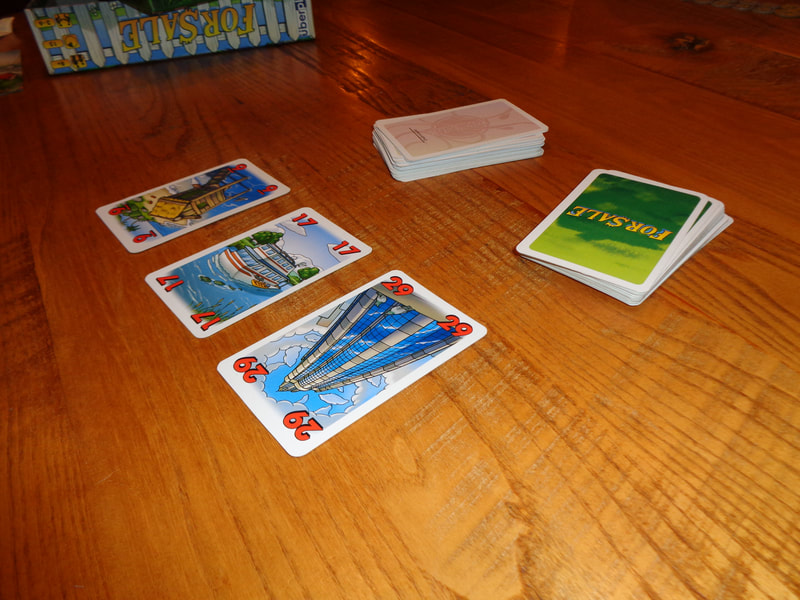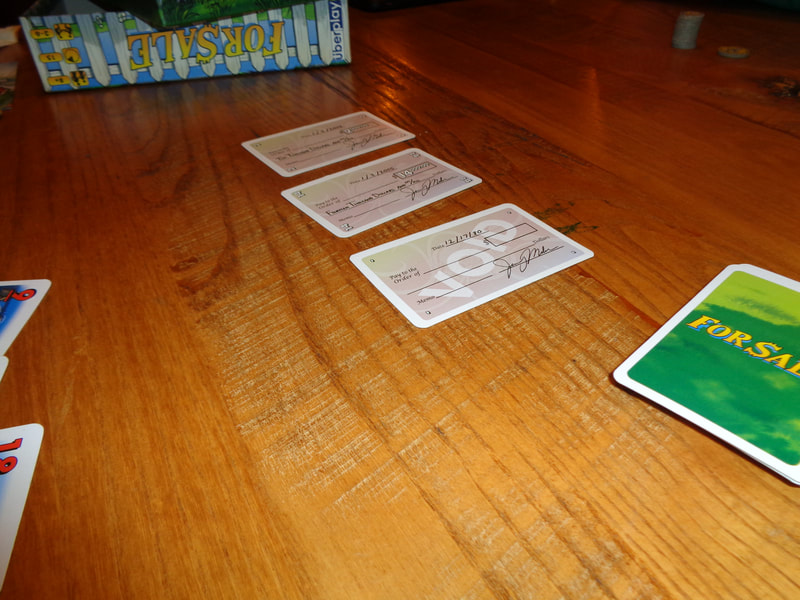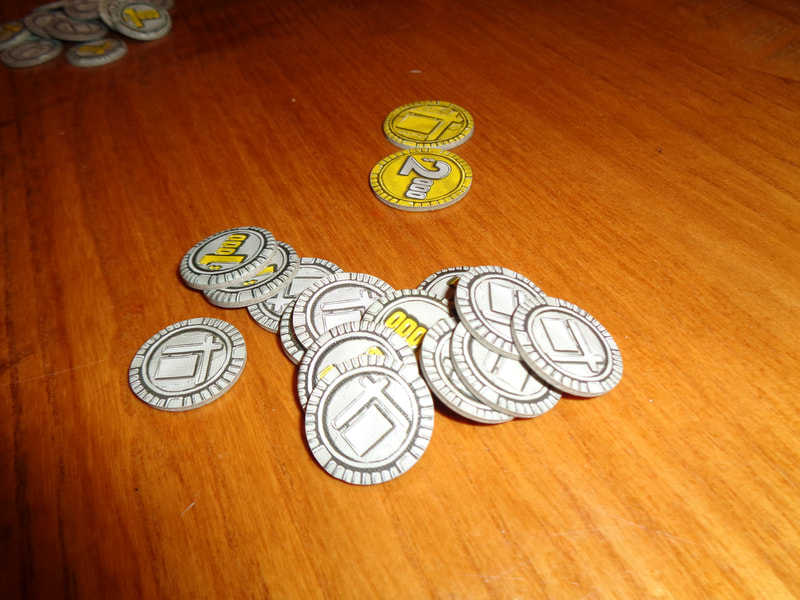|
20th July 2021 I'm in Woking at the Sovereigns with the Woking Gaming Club. The second and final game of the evening was For Sale; time for some property flipping and stressful auctioning action. What's in a game? For Sale is a card game and comes with 2 types of cards.
Artwork on the property cards is pretty good, colourfully depicting 30 different properties ranging from a lowly cardboard box for the 1 card to an orbiting space station for the 30 card. The currency cards all identically depict cheques of various values There's not much else to say here. How's it play? Setup
For Sale is played over 2 phases, in the 1st, players use their money to buy properties and in the 2nd, they use these to get currency cards, essentially flipping the properties for profit. Phase 1: Buying properties.
Phase 2: Flipping those properties.
Endgame Players tally the values of all the currency cards they acquired and any coins that were unspent from phase 1. Highest score wins. Overall
For Sale is a simple game to play, it features two types of auctioning that're easy to understand, however there are a couple of curveballs that that affect the game's dynamic. Firstly in phase 1; which is an open auction, there's the rule that states when a player passes, they only get half their bid back and the lowest valued card. It means the classic play of trying to run up someone else's bid is a risky proposition, you may well end up running yourself up for a very low value card as well. Even the act of initially bidding may cost a player more than they want to spend, it's something player's need to think about. All the property cards drawn have to be acquired by players and it may not seem like it, but sometimes a lower valued card can end up generating more profit. Why? Because the value of a card does not necessarily dictate its worth. This brings me to phase 2; the blind auction. This is where player's sell their properties to get profit, however the profits that players can potentially generate will contextually change from round to round and depends on the currency cards drawn. No matter how much you paid for a property card, when you use it, it will only generate income according to the currently drawn currency cards. This is where players have to start watching what other players will do and know when to push high or low valued property. If a $15,000 currency card had been drawn and you know another player has the 30 point property card, you know they're going to play it - it guarantees them the $15,000 card, so is it a good time for you to use a high value card? On the other hand, the 2nd highest might be worth it, or it might be not. Conversely; in some circumstances, the lowest value cards can have great worth, if all the currency cards drawn are high value, it can be a good time to play lower value cards, remember it's all about profit not value. A 30 point property card that costs $8,000 and nets a $15,000 currency card, generates a profit of $7,000. If 1 point property that cost 0 because somebody passed and took it for free is used to get a $8,000 property, then that's $8,000 profit! This example is extreme and doesn't realistically occur too often, but the principal is sound; if demand is high (Multiple high value currency cards are drawn.), then it's time to push your lowest value properties for maximum profit; capitalism at its finest! Conversely, if there are fewer high value currency cards out there, playing a high value property at the right time will outbid other players and score the maximum profit. All this makes For Sale a very situational, essentially contextually-driven game about managing the game's inherent unpredictability and adapting when it's called for. It becomes about not only knowing when to play which cards, but also watching what properties other players have and trying to predict their strategies, which can profoundly effect yours. I have love/hate relationship with auction games, the unpredictably always worries me and For Sale is more unpredictable than most in my opinion. Even so, it's an enjoyable game and definitely worth a try, if you're a fan of auction games, you should really try it.
0 Comments
Leave a Reply. |
AuthorI play, I paint. Archives
March 2024
Categories
All
|




 RSS Feed
RSS Feed
